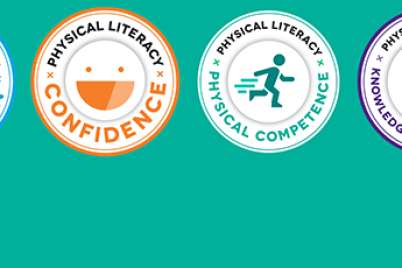
7 steps to get your infant ready for tummy time
Tummy time is important because the skills learned while on the tummy are essential for later development. But infants aren’t born being able to hold their heads up, which is why tummy time can be uncomfortable and frustrating for them.
Many sources I’ve read recommend that parents try to give their babies 30-60 minutes of tummy time each day, whether that’s in one chunk or spread throughout the day in much smaller portions. That’s not very much time, if you think about it!
Guest post by Christie Kiley
Christi is a paediatric occupational therapist who blogs at MamaOT.com, where a version of these tummy time tips first appeared.
Rather than shooting for a concrete number of minutes spent forcing your baby to lie flat on the ground (which will likely end with crying and screaming, like it did with mine), your baby can instead proceed through the steps listed below in order to build up the strength and stamina she needs to be able to independently lie on her tummy and actually enjoy it!
Start each step a few times a day, a few minutes a day, building up to step seven. Try not to let your baby cry during tummy time, though some grunting is normal when they are exerting themselves to try to “crawl” and move, and do your best to engage her by getting down to eye level and talking or singing to her.
Always supervise your baby during tummy time to make sure she is secure and safe. And, as mentioned previously, take these “steps” as suggestions rather than rigid requirements … let your baby (and your intuition) be your guide.
1. Baby is held up to adult’s shoulder while being burped or carried
This is, of course, one of the most common first positions in which people hold babies so, congratulations! If you’re reading this post then you’ve likely already accomplished step one.
This really is the first step to helping a baby learn to be comfortable in a prone position. The higher up on your shoulder you hold the baby, the more strength she requires to keep that head up and steady.
2. Baby lies with tummy down on adult’s tummy/chest
As with step one, this is also a very common practice among parents and caregivers of new babies. And – might I add – one of the sweetest and most memorable practices that occur during those early days and weeks of bonding. My first postpartum tears (tears of joy!) were shed while my baby nuzzled on me in this position when he was about a week old. Oh how I miss those days!
If your baby is not yet comfortable being horizontal on your tummy, which she probably won’t be, you can simply adjust how far you lean back/lay down while she rests on you. Now’s the time to kick back in your recliner chair or prop yourself with some pillows on the couch to get yourself into just the right position – anything for the baby, right?
3. Baby lies with tummy down across adult’s arms while playing or being carried
This one takes some practice, but the easiest way to accomplish this position is to place one forearm between baby’s legs up to the chest area, and then bring the other forearm down between the shoulder and ear that are closest to your own body. Confused? Picture what it would be like to hold her horizontal with her back to you, and then “roll” her forward to her tummy while still holding her in the air. (As a bonus, this can also be a great position for calming down babies who are fussy or gassy.)
You can practice with a baby doll or while standing in front of a mirror if you’re still feeling unsure. Once you get the hang of it, have some fun with it and turn on some music so you can dance with your baby while carrying her in this position! Some of my favourite music comes from Raffi, VeggieTales, Yo Gabba Gabba! and Elizabeth Mitchell.
You can move baby fast and slow, up and down, round and round … however she likes to move! Just make sure to stop for a few seconds every minute or so in order to allow her body to really register the movements (the body gets used to the continuous movements and sort of “stops” feeling it if it goes on and on at the same pace and rhythm for long enough).You can also try a variation of this hold by playing “super baby” with your little one!
4. Baby lies with tummy down on exercise ball, beach ball, big pillow or adult’s shins
This is a great one because you can vary the angle at which your baby is positioned, thus determining how easy or difficult it is. A greater incline will be more comfortable for a baby who is just beginning tummy time (kind of like being up against an adult’s shoulder as a newborn), whereas a more flat position right on top of the ball, pillow or shins will be more challenging and appropriate for babies who are further along in the process.
Once you get your baby into a position on the ball that is comfortable for both her and yourself, you can begin to slowly roll her forward and backward, making sure that you keep a good grip on her midsection and that she is okay with how far and fast you are moving her. While you can certainly place your hands on baby’s hips and position yourself behind her as you roll, it really is better if you can place yourself in front of her so that she knows where you are and can interact with you.
If you don’t have an exercise ball, you can use a big pillow instead, placing baby’s chest at the bottom edge of the pillow and propping her uphill from there so that she is at an incline similar to if she was placed on a ball.
And if you really want to get interactive with it you can lay on your back, bend your hips and knees at 90 degree angles, and place baby on your shins as you hold onto her and vary the angle at which she is positioned (this one is best for taller people, who have longer shins than us short folks). The more you bend your knees (i.e., the smaller the angle), the more inclined baby will be and, thus, the more comfortable she will be as she’s starting out.
You can turn it into a game by putting her on your shins and playing “elevator” as you slowly move her up and down as you sing or talk or do whatever you must in order to make it fun!
5. Baby lies with tummy down across adult’s legs, with adult either sitting in a chair or on the ground (leg position can vary)
Believe it or not, I first discovered this position as I desperately tried to soothe my son during his colicky months as a newborn (so glad those days are behind us!). Boy, am I glad that my mother showed me this trick – prone across her legs while supporting his head (which gets turned to the side), rubbing or patting his back, and maybe even offering him a pacifier. Worked like a charm when she used it on him.
It wasn’t until my baby was several months old that I discovered this position could actually be used as a means of introducing tummy time. My favourite was to sit on the floor with my legs extended so that he could start to put his arms out in front of him on the floor. This transitions nicely into step six …
6. Baby lies with tummy down and upper chest positioned over a rolled-up towel on the floor with arms over the towel
You can also position the baby so her upper chest is over your leg instead of a towel, or you can sit on the ground with your legs in a diamond shape (so the soles of your feet are touching each other) and position her facing away from you so her chest is over the part where your feet come together. You can place a toy, book, mirror or even another person in front of her in order to make this position more interactive.
I think we ended up kind of skipping over this step because my son just wanted too badly to crawl, and this position just frustrated him. Do what works for your baby … she’ll let you know if she likes it or not!
7. Baby independently lies with tummy down on the floor
Tada! Keep playing and challenging her and, before you know it, she’ll be pushing her little chest off the ground and getting ready to roll!
Best of luck in your tummy time endeavours!
Editor’s note: An earlier version of this article suggested that babies could sleep on their tummies while on the stomach or chest of a parent of caregiver. We’ve edited the article so it conforms to the Joint Statement on Safe Sleep [PDF] from the Public Health Agency of Canada, which recommends that infants should only sleep on their backs.






My baby will tolerate tummy time for a while – he’d rather sit though.